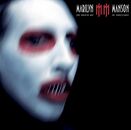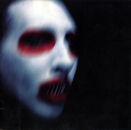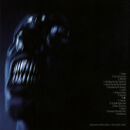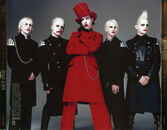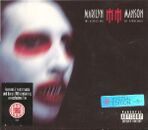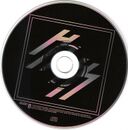Difference between revisions of "The Golden Age of Grotesque (album)"
Red marquis (Talk | contribs) (→Cover gallery) |
Red marquis (Talk | contribs) (→Cover gallery) |
||
| Line 103: | Line 103: | ||
Image:TheGoldemAgeOfGrotesque(Inlay).jpg|<center>Traycard | Image:TheGoldemAgeOfGrotesque(Inlay).jpg|<center>Traycard | ||
File:Img411.jpg|<center>Back cover | File:Img411.jpg|<center>Back cover | ||
| − | File:Img402.jpg|<center> | + | File:Img402.jpg|<center>Page 1 & 2 |
| − | File:Img403.jpg|<center> | + | File:Img403.jpg|<center>Page 3 & 4 |
| − | File:Img404.jpg|<center> | + | File:Img404.jpg|<center>Page 5 & 6 |
| − | File:Img405.jpg|<center> | + | File:Img405.jpg|<center>Page 7 & 8 |
| − | File:Img406.jpg|<center> | + | File:Img406.jpg|<center>Page 9 & 10 |
| − | File:Img407.jpg|<center> | + | File:Img407.jpg|<center>Page 11 & 12 |
| − | File:Img408.jpg|<center> | + | File:Img408.jpg|<center>Page 13 & 14 |
Image:GoldenAgeOfGrotesqueDeluxe.jpg|<center>Front slipcase of special edition with stickers denoting bonuses | Image:GoldenAgeOfGrotesqueDeluxe.jpg|<center>Front slipcase of special edition with stickers denoting bonuses | ||
Image:TheGoldemAgeOfGrotesque(CD).jpg|<center>Disc | Image:TheGoldemAgeOfGrotesque(CD).jpg|<center>Disc | ||
Revision as of 07:59, 12 September 2011
- This article is about the album. For other uses, see The Golden Age of Grotesque (song) and The Golden Age of Grotesque (art exhibition).
| The Golden Age of Grotesque | |||||
|---|---|---|---|---|---|
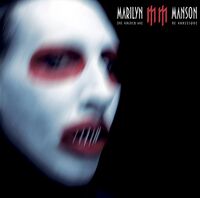
|
|||||
| Studio album by Marilyn Manson | |||||
| Released | May 5, 2003 | ||||
| Recorded | 2002–2003 at the Doppelherz Studio in Hollywood, California; The Mix Room in Burbank, California | ||||
| Genre | Industrial metal, Electro-industrial | ||||
| Length | 57:40 | ||||
| Label | Nothing, Interscope | ||||
| Producer | Marilyn Manson, Tim Skold, Ben Grosse | ||||
| Analysis and Interpretations | |||||
|
Art & The Golden Age (Nachtkabarett) |
|||||
| Marilyn Manson chronology | |||||
|
|||||
The Golden Age of Grotesque is the fifth studio album by Marilyn Manson, released on May 5, 2003 by Interscope Records. It incorporates themes from the glamorous Swing era of the thirties, as well as from the Weimar Republic of pre-Nazi Germany.[1] It was revealed in a 2007 interview with Kerrang! that this was intended to be Marilyn Manson's departure from music, however his divorce drove him to write the album's successor, Eat Me, Drink Me. It spawned two singles ("mOBSCENE" and "This Is the New Shit").
Contents
Production

In a November 2001 post by Manson on MarilynManson.com's message board, Manson stated that the band's fifth studio album would be "very much guitar driven" and heavy, in spite of previous claims that it would be beat-oriented. He also revealed that he had been working on a song with Slipknot drummer Joey Jordison, and that he was collaborating with Tim Skold, who at this time was not a member of the band.[5]
Beginning May 2002, the Austrian-Irish artist Gottfried Helnwein collaborated with Manson on the album. [2] The cover and the artwork inside the album sleeve was created by Helnwein, and this artwork was also shown in his exhibitions. Limited edition units included a DVD titled Doppelherz (Double-heart), a surrealist short film directed by Manson.[6]
Themes
Instrumentally, this album is more beat-driven and electronic than previous albums. This is perhaps due to Tim Skold's presence — some believe this album's sound is at times reminiscent of KMFDM, with whom Skold had collaborated prior to recording with Manson.
Lyrically, this album is full of historical and pop references, much like Holy Wood (In the Shadow of the Valley of Death). References include Peter Pan, Adolf Hitler, and Oscar Wilde. As in many of his other works, he makes use of word play and double-meanings, coining words like "gloominati", "scabaret sacrilegends", "vivi-sex symbol", "cocaingels", "mOBSCENE", "vodevil" and "para-noir".
The album also draws themes from Mel Gordon's 2000 book Voluptuous Panic: The Erotic World of Weimar Berlin. Concerned that Gordon might take issue with use of the book's material, Manson called Gordon, who said he couldn't imagine a greater compliment than a popular record based on the academic book. The album artwork is also influenced by the illustrations found in Voluptuous Panic.
The most enduring theme is chiefly notable in the single "This Is the New Shit". The song was seen as poppy, with the chorus - and title - possibly referring to the fact that Tim Skold had joined the band, bringing with him a completely new and different style of music. While on the surface this could be regarded as Manson's attempt at a mainstream sound, the song in fact is railing against contemporary music ( i.e., 'the new shit') and goes so far as to spell out the what Manson viewed the formula for mainstream success to be:
"Babble, babble, bitch, bitch, rebel, rebel, party, party, sex, sex, sex, and don't forget the violence, blah, blah, blah, got your lovey-dovey sad and lonely, stick your stupid slogan in, everybody sing along."
The album can be taken on two levels: first as a soundtrack of rebellion preaching the notion of living life to its fullest. The second takes a parody to the idea that living life to the fullest has led us into a nihilistic stupidity, hence the "rebel to sell" references within "The Bright Young Things" and the transformation into a commercially acceptable "happy" icon, Mickey Mouse (Manson posed as Mickey Mouse throughout the album's publicity).
Critical reception
| Professional ratings | |
|---|---|
| Review scores | |
| Source | Rating |
| Allmusic | Template:Rating 4[7] |
| BBC Manchester | |
| Billboard | (Favorable)[9] |
| Rolling Stone | Template:Rating 3[10] |
| The Guardian | Template:Rating 3[11] |
| Kerrang! | Template:Rating 4 |
Barry Walters of Rolling Stone commented "Marilyn Manson really should be sucking by now...what's surprising is that there's still so much life in what Manson is rehashing. Originality has never been his forte, but this walking sound bite excels at absorbing what's out there and distilling it through his anti-charisma until it's simultaneously fresh and putrid...the album loses momentum as the songs slow and dull down, but the first half of Grotesque shines brighter than it should."[10] The album met with modest commercial success. It debuted at № 1 in the United States, selling over 120,000 copies in the first week, but was the lowest selling № 1 album of the year. As of November 2008, the album has sold 526,000 copies in the United States.[12] The album drew a mixed critical response. Although ending up in many critics' 'best of' lists for 2003, other critics consider this Manson's weakest album, arguing that it lacks originality and thoughtful lyrics compared to its predecessors.
The song "Use Your Fist and Not Your Mouth" was featured in the 2003 video game Spawn: Armageddon and the 2005 videogame Cold Fear.
Grotesk Burlesk Tour
Grotesk Burlesk was the ninth tour Marilyn Manson embarked on, under management of major record label Interscope Records. It was also the band's fifth tour to span over multiple legs. The band was on the tour from April 11, 2003 until January 3, 2004.
Much of the costumes and attire used for the tour was tailored by French fashion designer and grand couturier Jean-Paul Gaultier.[13][14]
The stage would be set up in a series of platforms. The stage was set to resemble that of vaudeville, burlesque stage and a 1930's stage. During performances of "The Fight Song" Manson sings at a podium and he would often wear a hat with ears similar to that of Mickey Mouse and he also donned black face. At the end of the performance of "The Golden Age of Grotesque", Manson played saxophone. During performances of "The Dope Show", Manson would wear elongated arms, which he would swing in a marching manner as he walked and they were designed by Rudy Coby. A robotic mannequin was used for performances of "Tourniquet". Manson used to be elevated high above the stage during performances of "Para-noir", much like he did with performances of "Cruci-Fiction in Space" on the Guns, God and Government Tour and during performances of "Para-noir", two women accompanied Manson in singing while dressed as if they were conjoined. In other songs, they danced for "mOBSCENE" and "Sweet Dreams (Are Made of This)", and performed piano for "The Golden Age of Grotesque" and floor toms for "Doll-Dagga Buzz-Buzz Ziggety-Zag". Some performances, such as The Dope Show featured paintings by Manson.
Track listing
- 1. "Thaeter" – 1:14
- 2. "This Is the New Shit" – 4:19
- 3. "mOBSCENE" – 3:25
- 4. "Doll-Dagga Buzz-Buzz Ziggety-Zag" – 4:10
- 5. "Use Your Fist and Not Your Mouth" – 3:34
- 6. "The Golden Age of Grotesque" – 4:05
- 7. "(s)AINT" – 3:42
- 8. "Ka-boom Ka-boom" – 4:02
- 9. "Slutgarden" – 4:06
- 10. "♠" ("Spade") – 4:34
- 11. "Para-noir" – 6:01
- 12. "The Bright Young Things" – 4:19
- 13. "Better of Two Evils" – 3:48
- 14. "Vodevil" – 4:39
- 15. "Obsequey (The Death of Art)" – 1:35
Bonus tracks
- 16. "Tainted Love" (International bonus track) – 3:20
- 17. "Baboon Rape Party" (Japan and UK bonus track) – 2:41
- 18. "Paranoiac" (Japan bonus track) – 3:54
B-sides
- "Mind of a Lunatic" (Geto Boys cover) – 9:49
Cover gallery
Charting positions
Album
| Year | Chart | Position |
|---|---|---|
| 2003 | Billboard 200 | 1 |
| Top Internet Albums | 1 |
Singles
| Year | Single | Chart | Position |
|---|---|---|---|
| 2003 | "mOBSCENE" | Mainstream Rock Tracks | 18 |
| Modern Rock Tracks | 26 |
Release history
| Region | Date | Label | Format | Catalog |
|---|---|---|---|---|
| Mexico | May 5, 2003 | Interscope Records | Compact disc | — |
| Germany | May 12, 2003 | Interscope Records | Compact disc | — |
| North America | May 13, 2003 | Interscope Records | Compact disc | 37002 |
| United Kingdom | May 13, 2003 | Interscope Records | Compact disc | 9800065 |
| Australia | May 19, 2003 | Interscope Records | Compact disc | — |
| Japan | June 17, 2003 | Interscope Records | Compact disc | — |
Trivia
- In a January 12, 2008 interview with The Heirophant, Marilyn Manson revealed that he performed keyboard duties on the record, and not the band's keyboardist Madonna Wayne Gacy who allegedly at the time had no interest to perform or simply did not show up for studio sessions. This is backed by Manson having music writing credits on almost every track in addition to his lyrical credit.
- Original pressings of the album included a bonus DVD containing a short film directed by Manson, titled Doppelherz.
- The Austrian-Irish artist Gottfried Helnwein collaborated with Manson on this album. The cover and the artwork inside the album sleeve was created by Helnwein, and this artwork was also shown in his exhibitions.
- The Golden Age of Grotesque originally held the honor of biggest drop from #1 in the history of the Billboard 200 Albums chart, when it fell from #1 to #21 in its second week. Incubus broke this record in 2006 when their newly released album Light Grenades fell from #1 to #37 in its second week of charting.[15]
- A film called "A Grotesque Evening with Marilyn Manson" was released in Spain to promote the album.
Personnel
- Marilyn Manson – vocals, keyboards, synthesizer bass, mellotron, saxophone, digital editing, loops, snare drum rolls, producer
- John 5 – guitar, piano, orchestration
- Tim Skold – bass, guitar, accordion, keyboards, producer, loops, artwork, digital editing, drum programming, synthesizer bass, electronics, beats
- Ginger Fish – drums, rhythm direction
- Chuck Bailey – assistant engineer
- Tom Baker – mastering
- Jon Blaine – hair stylist
- Blumpy – digital editing
- Jeff Burns – assistant
- Ross Garfield – drum technician
- Lily & Pat – backing vocals
- Ben Grosse – producer, engineer, digital editing, mixing
- Mark Williams – A&R
- Gottfried Helnwein – art direction
- Andrew Baines – backing vocals
Analysis
For further reading and in depth analysis refer to The Nachtkabarett:Art & The Golden Age & The NAchtkabarett:Degenerate Art & Fascism
See also
References
- ↑ Winwood, Ian (2002-03-23). "Paranoia, Jail Sentences, September 11 and Kittens?". Kerrang! (Bauer Media Group).
- ↑ 2.0 2.1 "Marilyn Manson Shocking New Images Revealed". Kerrang! (Bauer Media Group) (941). 2003-02-08.
- ↑ "Marilyn Manson". Gottfried Helnwein. 2003-02-08. http://www.helnwein.com/presse/international_press/artikel_1074.html. Retrieved 2011-05-02.
- ↑ Helnwein, Gottfried (2003-09-01). "Album Covers That Never Were". Gottfried Helnwein. http://www.helnwein.com/news/update/artikel_1030.html. Retrieved 2011-05-02.
- ↑ METEOR SHOWERS AND LAP DANCE. MarilynManson.com. Marilyn Manson. November 2001.
- ↑ "The Golden Age of Grotesque [Limited Edition]". Amazon.com. http://www.amazon.com/Golden-Age-Grotesque-Marilyn-Manson/dp/B000092ZVV/ref=sr_1_1?s=music&ie=UTF8&qid=1290014530&sr=1-1. Retrieved 2010-11-18.
- ↑ Allmusic Review
- ↑ BBC Manchester Review
- ↑ Billboard Review
- ↑ 10.0 10.1 Walter, Barry (2003-05-12). "The Golden Age of Grotesque". Rolling Stone. http://www.rollingstone.com/music/reviews/album/7733/38088. Retrieved 2010-11-22.
- ↑ The Guardian Review
- ↑ Grein, Paul. "Chart Watch Extra: What A Turkey! The 25 Worst-Selling #1 Albums". Yahoo! Music. November 21, 2008.
- ↑ "For The Record: Quick News On Marilyn Manson And Jean Paul Gaultier, Bone Crusher, Cam'ron, Pearl Jam, Jimi Hendrix & More". MTV News. 2003-04-28. http://www.mtv.com/news/articles/1471565/.jhtml. Retrieved 2011-03-12.
- ↑ "Fashion Rocks Red Carpet". Style Magazine. http://web.archive.org/web/20071016154730/http://www.style.com/peopleparties/search/slideshow/person2592?iphoto=8. Retrieved 2011-03-12.
- ↑ Chart Beat. Billboard.com. December 14, 2006.
